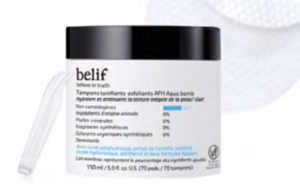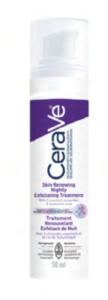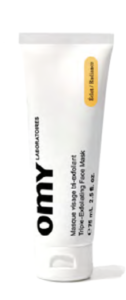By Jessica Dostie
Their names may sound scary, but there’s nothing to be afraid of. Alpha-hydroxy acids (AHAs) and polyhydroxy acids (PHAs), two star ingredient families in anti-aging cosmetics, work on the skin’s surface to help remove dead cells and reveal a more even and radiant complexion. Here’s how to get the most out of them.
Are AHAs suitable for reactive skin?
It depends! There are many types of AHAs, all of which stimulate cell renewal. The best known of these, glycolic acid, is derived from sugar cane and known to be a potential irritant. An alternative is to choose products that instead contain lactic acid (which comes from lactose) or mandelic acid (from bitter almonds), which are often better tolerated. Skin-care products made with PHAs, which are even gentler, are another option to consider if you have sensitive skin.
Are there any contraindications for chemical exfoliants?
Unless otherwise noted, products containing retinol or vitamin C, which are themselves known irritants, shouldn’t be used at the same time as AHAs or PHAs. Even if your skin reacts well to AHAs, these ingredients are known to increase sun sensitivity. That’s why labels usually indicate using them with a sunscreen that has an SPF of at least 30. Even better: reserve them for your nighttime routine.
In the Cosmetics Bag: Our Picks
In addition to cleaning the skin, these two-in-one pads formulated for sensitive skin have a textured side to gently remove dead cells.
Belif Aqua Bomb PHA Exfoliating Toner Pads ($32 at Sephora stores and sephora.ca).
This unscented night serum made with 5% glycolic and lactic acids helps accelerate cell renewal.
CeraVe Skin Renewing Nightly Exfoliating Treatment ($36.99 at drugstores).
Combining three kinds of exfoliation (chemical, mechanical, and enzymatic), this mask, which works in under five minutes, brightens the complexion as it improves the skin’s texture.
OMY Laboratories Triple-Exfoliating Face Mask ($49.99 at omycosmetics.com).









